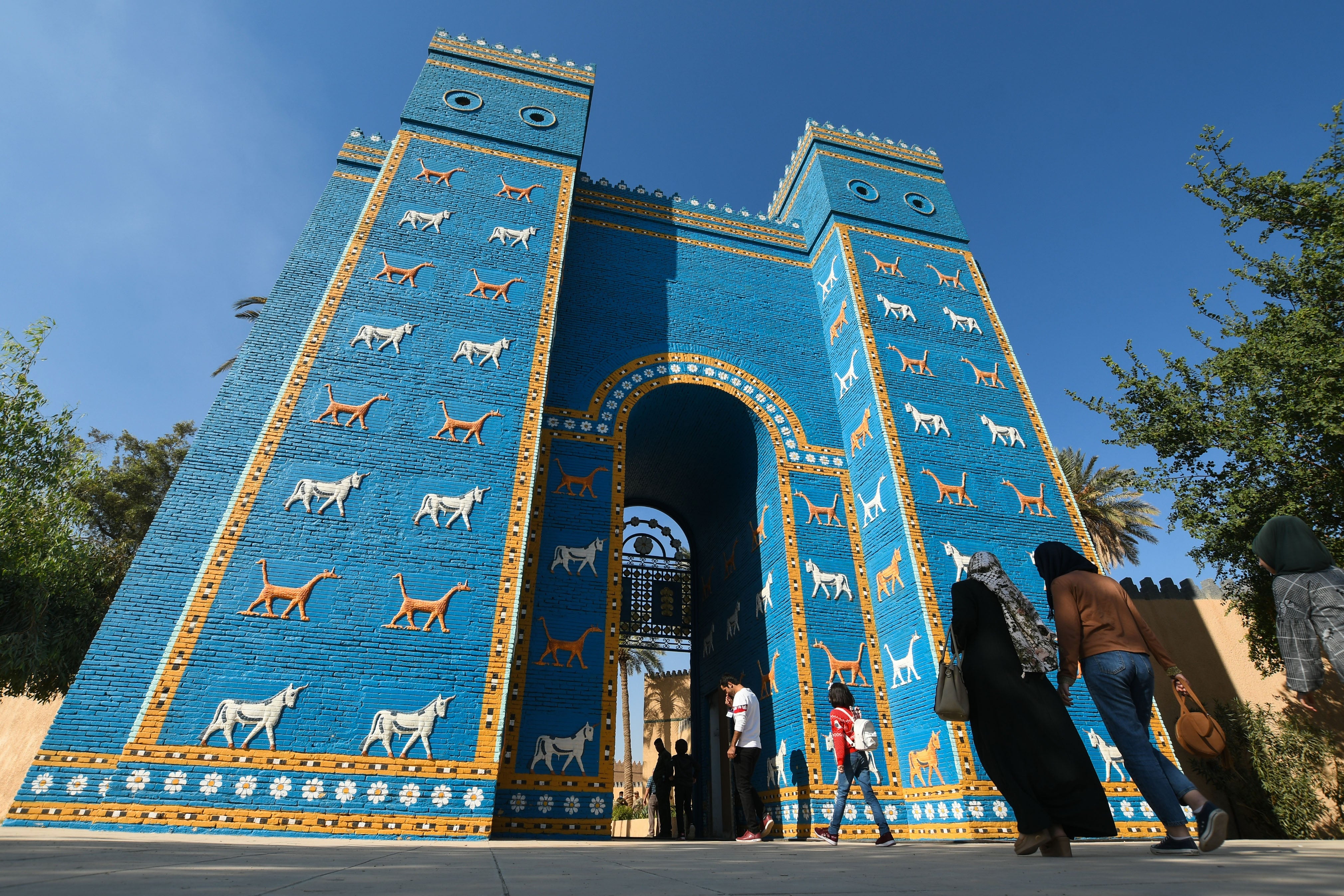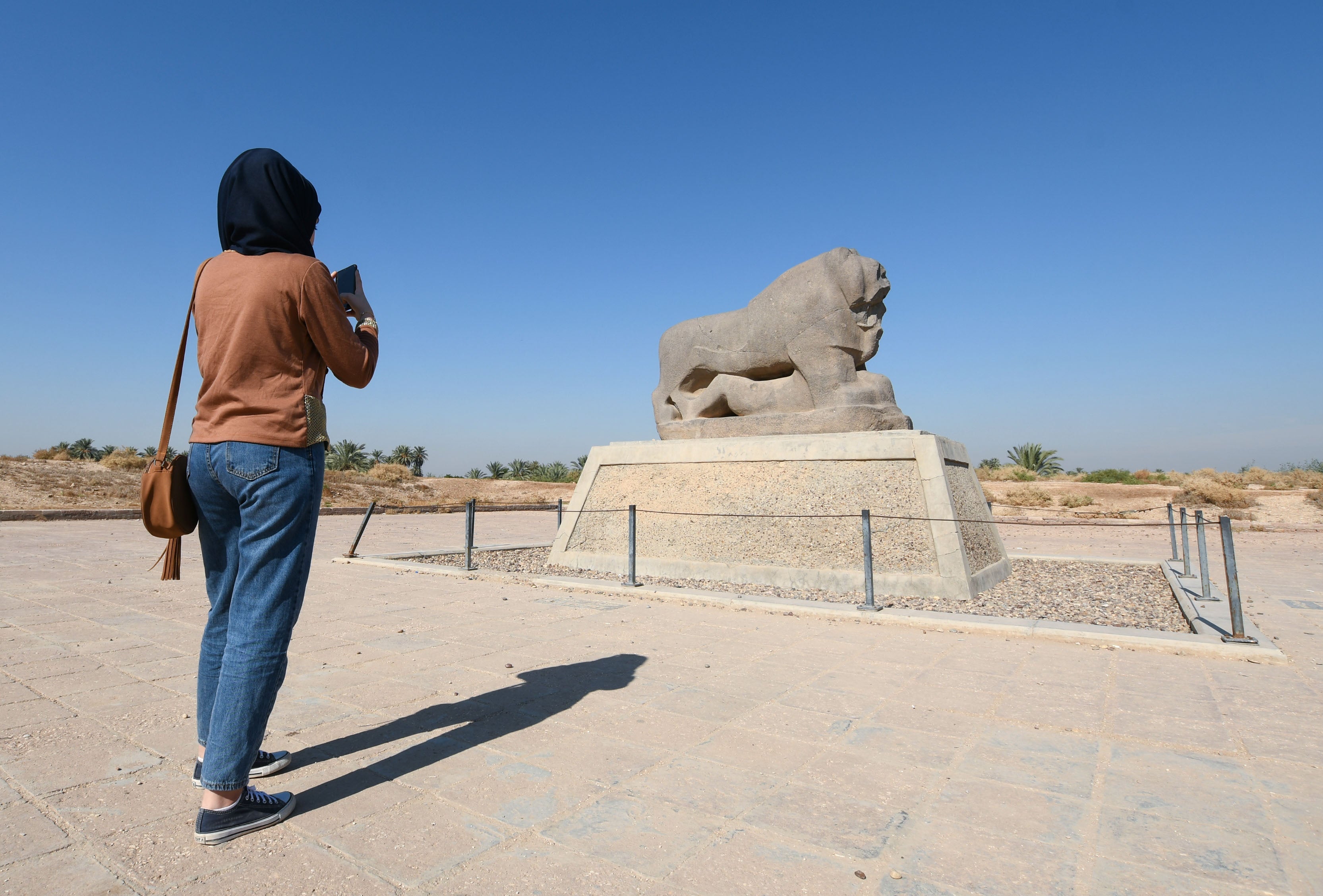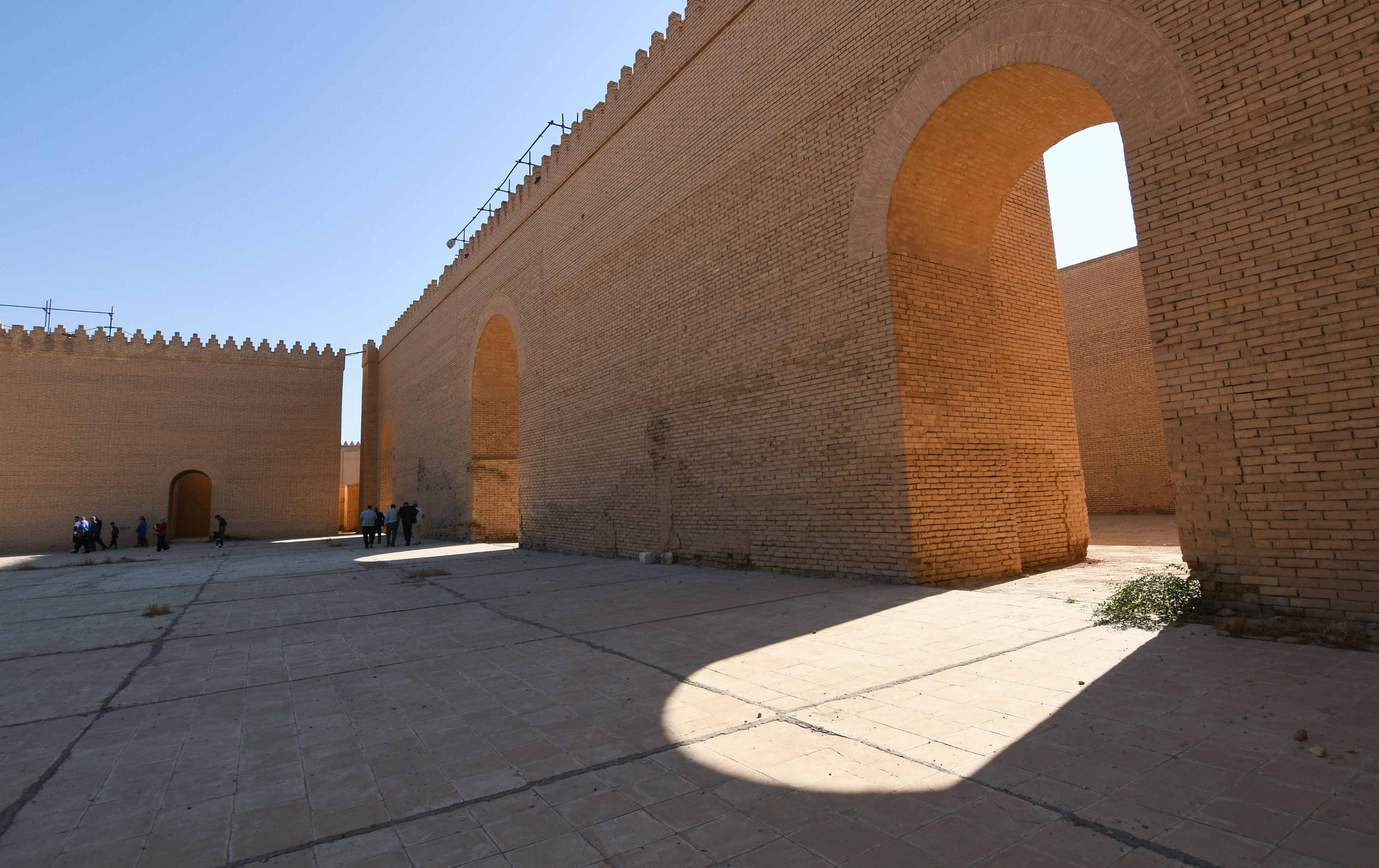Beleagured Babylon: The battle to save a wonder of the ancient world
The ancient city of Babylon in modern-day Iraq is fighting for its survival, under siege from time, water and the perils of modern civilisation. Jane Arraf hears from the archaeologists trying to preserve it

Your support helps us to tell the story
From reproductive rights to climate change to Big Tech, The Independent is on the ground when the story is developing. Whether it's investigating the financials of Elon Musk's pro-Trump PAC or producing our latest documentary, 'The A Word', which shines a light on the American women fighting for reproductive rights, we know how important it is to parse out the facts from the messaging.
At such a critical moment in US history, we need reporters on the ground. Your donation allows us to keep sending journalists to speak to both sides of the story.
The Independent is trusted by Americans across the entire political spectrum. And unlike many other quality news outlets, we choose not to lock Americans out of our reporting and analysis with paywalls. We believe quality journalism should be available to everyone, paid for by those who can afford it.
Your support makes all the difference.Ammar al-Taee, an Iraqi archaeologist, picks up a clay panel fallen from one of the ancient walls of Babylon. Paw prints of a dog that wandered onto the drying clay more than 2,000 years ago obscure part of the cuneiform inscription – a reminder that these ruins were once a living city.
“This is the heritage of Iraq, and we need to save it,” says al-Taee, 29.
As part of a new generation of archaeologists, al-Taee works for the Iraqi government on a World Monuments Fund project aimed at stemming the damage to one of the world’s best known – yet least understood – archaeological sites.
After years of Iraqi effort, Babylon was inscribed in July 2019 as a Unesco World Heritage Site, recognising the exceptional universal cultural value of what was considered the most dazzling metropolis in the ancient world.
But you have to use your imagination.
A century ago, German archaeologists carted off the most significant parts of the city. A reconstructed Ishtar Gate using many of the original glazed tiles is a centrepiece of Berlin’s Pergamon Museum. Other pieces of Babylon’s walls were sold off to other institutions, including the Metropolitan Museum in New York.
Now, Babylon, like many of Iraq’s archaeological sites, has fallen into disrepair. The elements and damaging reconstruction have left walls crumbling, and construction and fuel pipelines threaten vast areas of the huge, largely unexcavated city.
Still, Iraqis – though preoccupied with the country’s precarious security situation and pressing political and financial problems – feel a deep connection here.
I first saw Babylon in the 1990s. Then, in a country under Saddam Hussein’s iron grip, the most joyous part of visiting was seeing families free of their worries for a few hours. Past a Disneyesque recreation of the Ishtar Gate, you could choose a postcard from a rotating metal rack and post it in the metal mailbox.
Now, that mailbox is rusting and abandoned, and police guarding the site have taken over the souvenir shop.
After years of conflict, although not violence-free, Iraq is safe enough for younger Iraqis who have never seen most of their own country to come to Babylon.

On a recent weekend, Ahmed Juwad and his college friends stop to take selfies as they stroll down the processional way, where Babylonian kings paraded statues of their gods and goddesses.
“The antiquities are beautiful,” says Juwad, 23, an art student. “They comfort my soul.”
Like many Iraqis, he feels Babylon’s past is not just ancient history but his history.
A visitor now to the site about 50 miles south of Baghdad sees a mostly reconstructed outline of a small part of the city, including the walls that once supported the Ishtar Gate.
For hundreds of years until the mid-1900s, Babylon suffered the ignominy of surrounding townspeople dismantling its walls to cart away the ancient bricks for their own building projects.
The 4,000-year-old city, mentioned hundreds of times in the Bible, became the capitol of the ancient Babylonian empire and was considered the largest city in the world. The Code of Hammurabi, one of the earliest recorded laws and punishment, came from Babylon. So did advances in astronomy and other sciences.
The Babylonian empire fell in 539BC to the Persian empire and two centuries later to Alexander the Great, who died there. His empire collapsed and Babylon was eventually abandoned.
Because Nebuchadnezzar built palaces and temples on top of previous ones, there are entire layers of the city underground, and underwater
Some of the walls, with their 2,500-year-old clay reliefs of dragons and bulls associated with the gods, still stand. But many of the bricks are crumbling, and as the water table rises, entire walls are in danger of falling. Historical preservationists estimate it would cost tens of millions of dollars simply to install a system to keep water from seeping in.
“The bricks in this area are repeatedly being exposed to water, dryness, and rising salts, and then they collapse,” says Jeff Allen, a historical preservationist who has led the World Monument Fund project here since 2009.
Eroded by dried salt from the water, some of the sun-baked bricks literally crumble to the touch.
But as has so often been the case for Babylon over the years, the biggest threats to the fragile site are human-made.
Inside Babylon’s outer city walls, Iraq’s oil ministry is building a metering station for one of the three pipelines that have been laid in recent years. Private homes have been multiplying within the perimeter of the site.
While Iraqi officials went to great lengths to protect the site while vying for the coveted World Heritage Site designation, those efforts appear to have since eased.

“It’s a sense of pride to have Babylon a World Heritage Site, and during that process the state board for heritage was able to get people to behave better,” Allen says. Now, he said, it’s difficult to stop even clearly illegal building.
After the invasion of Iraq in 2003, US military contractors built a base on the site, digging trenches, driving armoured vehicles on the fragile streets and filling sandbags with dirt mixed with pottery and bone shards. All that caused significant damage, a British Museum report found.
But it was hardly the first encroachment.
In the 1920s, the British ran train tracks through the archaeological site as part of a Baghdad-to-Basra railway. Later, Iraq built an adjacent highway.
Saddam Hussein, who saw himself as the successor to King Nebuchadnezzar, in the 1980s built a large palace overlooking the excavated remains. He also ordered parts of Babylon reconstructed, leading to most of the current conservation problems.
The restoration installed heavier modern bricks atop the ancient original ones. Cement floors trapped water while a cement roof on one of the ancient temples pushed down the entire structure.
“There was a period in the Seventies and Eighties when it was customary to use cement,” says Josephine D’Ilario, an Italian earthen architecture specialist working on the site. Now, she says, “we see that after decades the cement is damaging things”.

After a year-long delay because of the pandemic, the World Monuments Fund team is back in Babylon, deciding how best to address the damage in places where trying to chisel out the concrete could do still more harm.
The nonprofit fund’s Future of Babylon project, financed partly by the US State Department, has shored up walls in danger of falling and stabilised the iconic Lion of Babylon statue. It is also training Iraqi conservation technicians and advising on site management.
For a city that has figured so large in the world’s imagination, remarkably little is known for certain about Babylon.
No archaeological evidence has uncovered the Hanging Gardens of Babylon, reputed to be one of the Seven Wonders of the Ancient World. The location of the ziggurat said to have been the Tower of Babel described in the Old Testament has also never been established.
Much of the problem is that most of the 4-mile-square city has never been excavated or even surveyed.
“It is only some large and well-known buildings that are excavated,” says Olof Pedersen, professor emeritus in Assyriology at Sweden’s Uppsala University and a consultant to the World Monuments Fund. “Most of the city we don’t know very much about.”
Because Nebuchadnezzar built palaces and temples on top of previous ones, there are entire layers of the city underground, and underwater.
“We can only guess how deep it could be,” says Pedersen, one of the world’s leading experts on the archaeology of Babylon.
As to what knowledge or treasures might be down there, he says, “it’s a very simple answer – no one knows.”
© The New York Times




Join our commenting forum
Join thought-provoking conversations, follow other Independent readers and see their replies
Comments